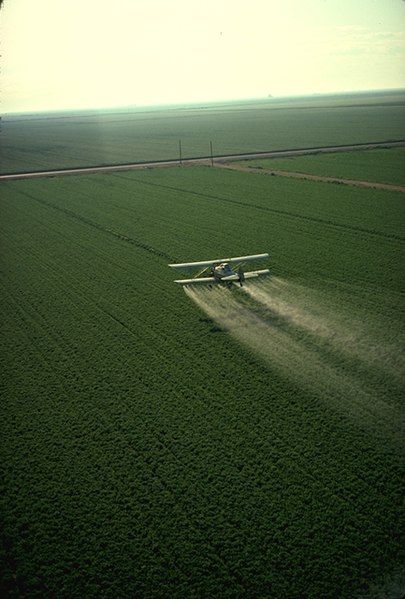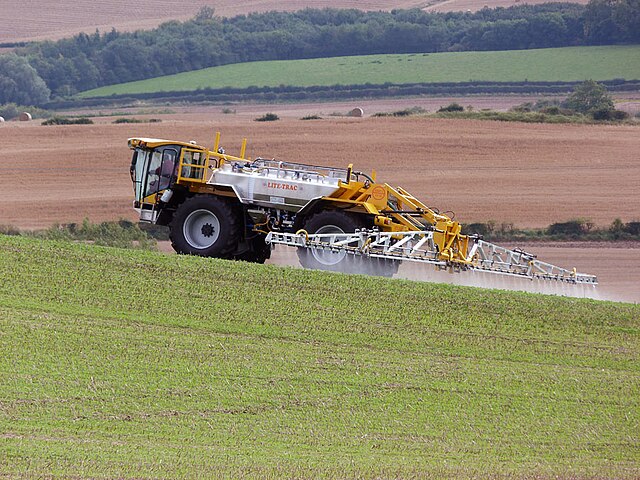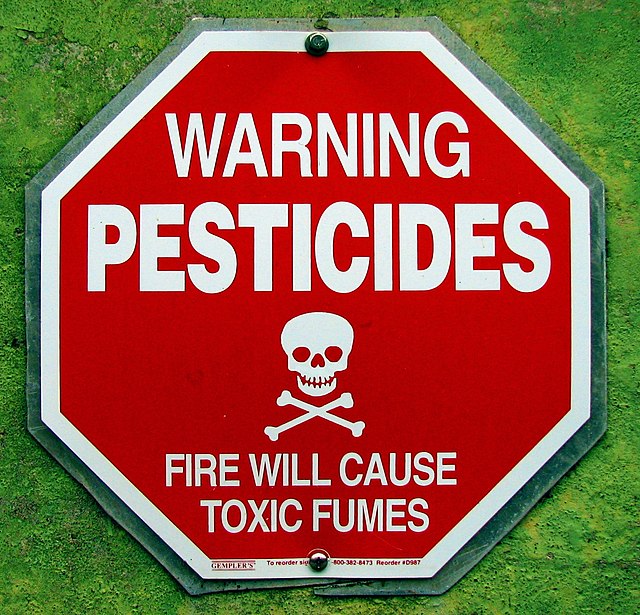Pesticides are substances that are used to control pests. They include herbicides, insecticides, nematicides, fungicides, and many others. The most common of these are herbicides, which account for approximately 50% of all pesticide use globally. Most pesticides are used as plant protection products, which in general protect plants from weeds, fungi, or insects. In general, a pesticide is a chemical or biological agent that deters, incapacitates, kills, or otherwise discourages pests. Target pests can include insects, plant pathogens, weeds, molluscs, birds, mammals, fish, nematodes (roundworms), and microbes that destroy property, cause nuisance, or spread disease, or are disease vectors. Along with these benefits, pesticides also have drawbacks, such as potential toxicity to humans and other species.
A crop-duster spraying pesticide on a field
A self-propelled crop sprayer spraying pesticide on a field
A sign warning about potential pesticide exposure
Preparation for an application of hazardous herbicide in the US
Pest control is the regulation or management of a species defined as a pest; such as any animal, plant or fungus that impacts adversely on human activities or environment. The human response depends on the importance of the damage done and will range from tolerance, through deterrence and management, to attempts to completely eradicate the pest. Pest control measures may be performed as part of an integrated pest management strategy.
An agricultural aircraft applies low-insecticide bait against western corn rootworm.
Bronze cat, Ancient Egypt. (664–525 BC)
Biological pest control: parasitoid wasp (Cotesia congregata) adult with pupal cocoons on its host, a tobacco hornworm Manduca sexta (green background)
Cultivation by ploughing exposes insect pests to predators such as black-headed gulls.








